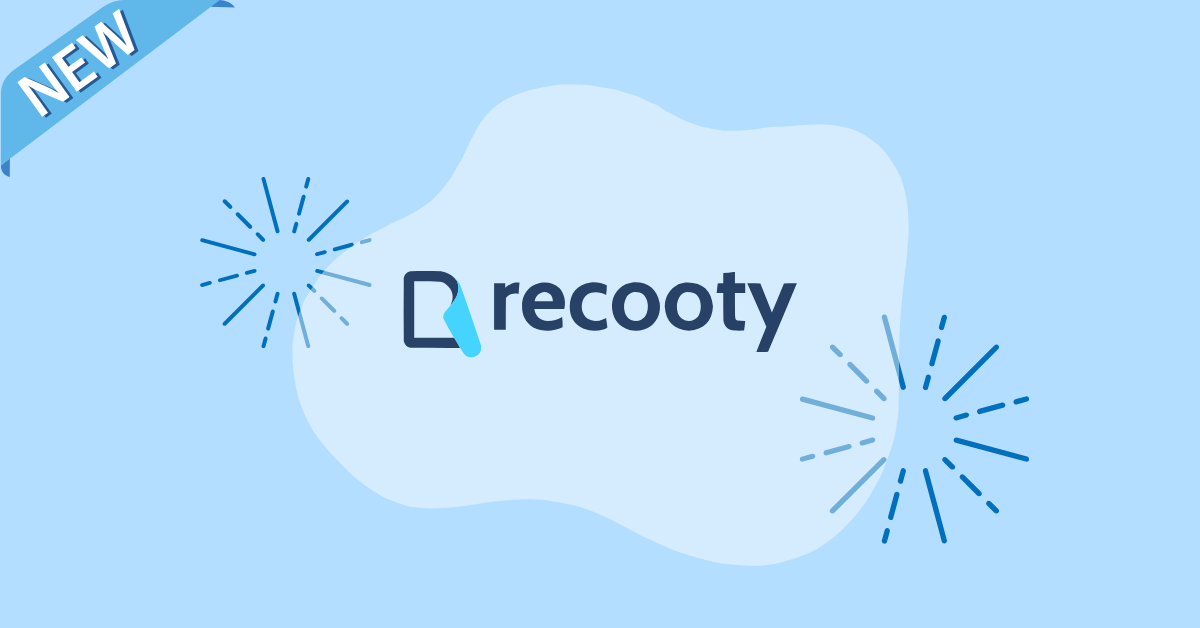Guide to Diversity Equity and Inclusion in the Workplace 2025
Neha Jain

What makes a workplace truly great?
It’s not just about the work; it’s also about the people.
That’s where diversity equity and inclusion in the workplace comes in. It focuses on creating a welcoming environment where everyone feels they can contribute.
Around 63% of employees today say they look for DEI initiatives like inclusive job descriptions, flexible perks, and more when choosing a company.
However, there have been some big changes to DEI programs because of new rules. These rules have pushed companies to rethink their practices. It’s important for businesses to promote diversity, but they also need to make sure they follow these new guidelines.
In this blog, we’ll explore what does diversity equity and inclusion mean and why they matter. You’ll see the relationship between them, the challenges companies are facing, and best practices in 2025.

Diversity refers to the differences among human beings. These differences can include, but are not limited to, race, gender, age, experiences, talents, skills, and opinions.
According to Glassdoor, 2 out of 3 job candidates seek companies that have diverse workforces.
As such workforce can bring different perspectives, ideas, and experiences to the table. This helps improve decision-making and boosts innovation and creativity.
Inherent: Characteristics such as age, race, and gender that are intrinsic to an individual.
Acquired: Attributes such as skills, experience, and education that can be developed over time.
An example of diversity in the workplace is Sodexo. With a strong focus on gender parity, it has been included in Bloomberg’s gender equality index.
37% of the company’s executive committee are women, and 60% of its board of directors consists of women. Sodexo has found that when there is an optimal gender balance within an organization, employee engagement increases by 4 percentage points, gross profit increases by 23%, and the brand image strengthens by 5 percentage points.
Equity refers to providing the required support and career advancement opportunities to employees to help them succeed. It ensures that each employee has unique needs and provides them resources accordingly.
Often, equity and equality are used interchangeably. But they are different.
Equality means providing equal resources to everyone, while equity provides resources according to specific needs.
For instance, consider training and professional development opportunities. An equal approach might involve offering the same training sessions to every employee, assuming that the same content will benefit everyone in the same way.
However, this perspective fails to consider that employees have different skill sets, career goals, and learning styles.
Accenture has a strong commitment to creating a culture of belonging and equity. Voted #1 in Refinitiv’s Diversity and Inclusion Index, the company has invested $1.1 billion in learning and development opportunities for its employees.
Accenture’s Vaahini Network supports women’s career development by providing access to mentorship, networking opportunities, and leadership development programs. The company also has a strong commitment to pay equity and regularly audits its compensation practices.
Inclusion refers to an environment where diverse employees have equal involvement and access in community and decision-making. Inclusive companies make better business decisions up to 87% of the time.
A great example of inclusion is Warby Parker. They focus on listening to different points of view and then taking real action based on what they hear. Warby Parker works hard to create an atmosphere where employees feel comfortable being themselves and sharing their unique stories. They believe that when people feel included in one part of the company, it can spark new ideas in other areas.
Let’s understand the relationship between diversity inclusion and equity with an example.
Imagine a software company launching a new app. Here’s how diversity equity and inclusion plays a role in the project’s success:
However, what happens when only two of 3 are considered.
A diverse team that feels included can generate many ideas, but if equity is absent, not everyone may have equal access to resources or decision-making power. Some may dominate conversations while others remain silent.
A diverse group that receives fair support can thrive, but without inclusion, team members might not feel comfortable sharing their thoughts. This could lead to valuable insights being overlooked.
A workplace that ensures fair access and promotes a welcoming environment can support its members effectively. However, without diversity, the group may miss different perspectives, limiting creativity and innovation.
Thus, components strengthen the overall workplace environment. When all three are present, they create a culture that values diverse viewpoints, promotes fairness, and ensures everyone feels welcomed and heard. Each aspect supports the others, making them essential for a successful workplace.
When planning to create workplace diversity policies for organizations, it’s important to include DEI in your hiring practices. This means hiring individuals from different ethnicities, genders, and races.
One important point to note is that diversity equity and inclusion policy does not mean giving any specific person or group special benefits or chances in the hiring process. Instead, it means providing all candidates with equal opportunities and then selecting the best-suited candidate for the specific job role.
As Karen Draper said, “Diversity doesn’t look like anyone. It looks like everyone.”
A DEI hire refers to someone brought on board to enhance the diversity of a team or organization. However, the term has recently been misused in a negative light. Some people use the term to imply that a candidate was chosen solely based on their background rather than their qualifications or abilities.
This perspective is misleading and damaging, as it can undermine the hard work and talent these individuals contribute.
In reality, hiring with DEI is about making thoughtful decisions to build stronger teams. Diverse management teams can achieve 19% higher revenue due to increased innovation. So, is not a negative approach, but a way to bring a diverse range of voices and experiences.
So till now you learned the diversity equity and inclusion definition and basics; now let’s see how it impacts organizations and their importance.
At the core of why DEI matters, it’s really because people matter. All of your employees feeling a high sense of belonging and empowerment and inclusion is important because your people working for you should matter. And beyond that, your customers matter. So if you’re building a diverse team that represents a diverse set of identities, experiences, and abilities, you’re setting yourself up to build a product that services more people across those differences.

Studies say that companies with diverse teams are 1.7 times more likely to be leaders in innovation.
So, diversity equity, and inclusion in the workplace helps enhance innovation and creativity. When people from different backgrounds work together, they share unique ideas. This mix of perspectives leads to better problem-solving.
Having a diverse workforce can improve financial performance. It also increases profitability. For instance, businesses in the top group for gender diversity are 25% more likely to earn higher profits than their competitors.
Also, companies with racial and ethnic diversity are 35% more likely to perform better financially than similar businesses. This shows that DEI in workplace is not just good for fairness; it also helps the bottom line.
DEI boosts employee engagement and satisfaction, too. When everyone feels included and valued, they tend to be happier at work.
Indeed’s DEI training showed that employees who feel included are more engaged in what they do. Plus, 83% of Millennials say they are more engaged when they work in inclusive environments.
Happy, engaged employees are likely to stay with the company and do their best work.
Focusing on DEI allows organizations to expand their talent pool. This means they can find and hire the best people for the job, no matter their background.
For example, Nuuday saw great improvements in employee satisfaction when they emphasized creating a safe and welcoming work environment.
Companies with diverse leaders not only attract better talent but also help ensure everyone’s voice is heard and valued.
Strong DEI practices also help improve a company’s reputation. When organizations are known for valuing diversity and inclusion, they get noticed positively by the public.
This can open up more business opportunities. In fact, 75% of job seekers say they think about a company’s DEI efforts when deciding where to apply.
Finally, such initiatives work to address long-standing inequalities. These programs aim to provide fair chances for everyone.
Many businesses are starting equitable hiring practices to help correct past unfairness. Companies that focus on DEI often see an increase in hiring underrepresented candidates, making workplaces more equal for all.
Organizations today face several challenges when trying to implement diversity equity and inclusion initiatives.
Many organizations face backlash against their Diversity, Equity, and Inclusion (DEI) initiatives. Employees from dominant social identity groups, such as white individuals and men, may feel threatened by such programs.
They might see these initiatives as unfair because they highlight existing inequalities. For example, when companies try to promote gender equity to help women in leadership roles, some men may perceive that as unfair to them.
President Trump issued executive orders aimed at ending federal DEI programs. Though these target DEI initiatives in the public sector, it made it unclear how private companies should handle their own efforts.
While the orders do not require private companies to make changes right away, they encourage firms to rethink their practices. Many companies, like Target, that have scaled back DEI initiatives faced boycotts that hurt their reputations and financial standing.
For example, under the new rules, federal contractors will need to eliminate DEI-related offices and stop DEI training. They also have to make sure their hiring and promotion practices follow strict merit-based standards. If they don’t comply, they could face legal risks, like lawsuits claiming unfair treatment.
Despite these challenges, it remains critical for organizations. Because a recent Resume.org survey found that only 5% of companies have completely eliminated their DEI programs, while 22% are increasing their DEI budgets.
This means that many organizations still see it as essential for long-term success.
Here are some suggestions:
Instead of viewing DEI in workplace as just rules to follow, companies should present them as chances for employees to learn and grow.
This approach helps reduce feelings of threat. For instance, a company can hold workshops where employees share their experiences and learn together about its importance.
Organizations should create safe spaces for employees to talk about such topics. Open dialogue about different experiences can help build understanding and reduce defensiveness.
For example, a company can have regular discussion groups where employees can talk about their feelings and thoughts about DEI efforts.
Change takes time. Companies should celebrate small wins in their efforts. Recognizing progress, like increasing diverse hiring, can inspire employees to keep working toward inclusion.
Companies must regularly review DEI programs to make sure they align with current laws. This includes conducting audits of hiring, promotion, and training practices.
For example, a company might hire a legal expert to review their DEI practices and ensure they are following the new regulations.
Transparency is vital. When organizations inform employees about changes to programs, it helps everyone understand the reasons behind these adjustments. For instance, if a company decides to alter their DEI training, they should explain the changes and why they are necessary.

In 2025, organizations must adapt their Diversity, Equity, and Inclusion (DEI) practices to keep up with new rules and changes. Here are some easy-to-follow best practices that can help your organization create a welcoming and fair workplace.
Start by reviewing your current practices. It’s smart to do an audit under attorney-client privilege to keep findings confidential. This will help ensure that you’re following the new rules and also see how well your current initiatives are working.
Some companies are thinking about changing the names of their DEI initiatives. If you decide to make this change, be ready to explain why. Clear communication is important, so employees don’t think you’re stepping back from your commitment to diversity.
Inclusion shouldn’t be just a program; it should be part of how your organization operates. This means making sure that every hiring and promotion decision is based just on merit. For example, you can broaden the definition of diversity to include people like veterans or those from disadvantaged backgrounds.
To build a diverse workforce, start with your hiring practices. This means using methods that remove bias, like blind resume reviews. Also, look to hire from underrepresented communities and train recruiters to recognize biases. This will help you build a fairer hiring process.
Having open conversations among employees is super important! Create opportunities for team members to share their thoughts and stories. This helps everyone feel included and builds a sense of community, especially when things are changing.
Training should focus on making fair decisions in hiring and promotions. This helps everyone understand that DEI efforts include a variety of experiences without compromising on skills. Make sure all managers get trained to understand the importance of these ideas.
Start a DEI council or group to ensure accountability. These councils, filled with diverse people, can guide your strategy, keep track of progress, and suggest improvements. This makes sure that everyone is on the same page.
Tracking your efforts is crucial. Set key performance indicators (KPIs) for diversity, inclusion scores, and retention rates. Regular employee surveys can help you understand how inclusive your workplace really feels.
Technology can really help with DEI initiatives. Use applicant tracking systems that reduce bias and tools that support employee resource groups (ERGs). AI analytics can help you find gaps in diversity and track improvements.
The laws around DEI are always changing, so you should always seek legal advice. Consulting experts will help ensure your practices follow current rules. Staying informed about changes helps your organization avoid any legal issues.
Diversity equity and inclusion in the workplace is not just an initiative; it’s an ongoing practice. Despite the challenges, organizations like Apple continue to strengthen their commitment towards it. Today’s candidates are more aware than ever of how diverse and inclusive a company is.
If you want to introduce DEI in your organization, begin with unbiased hiring practices. Recooty is a tool that can help with this. It features AI-driven resume parsing that allows you to analyze candidates without any biases and ranks them based on the job description.
Additionally, it helps you generate concise, unbiased job descriptions on the go and post them to top-class job boards in one click.
Diversity, Equity, and Inclusion in the workplace means taking clear and thoughtful steps to create a team that includes different kinds of people. Diversity is about recognizing and valuing the different backgrounds of individuals. Equity means treating everyone fairly and giving equal opportunities. Inclusion focuses on creating a space where everyone feels welcomed, respected, and supported.
The “Golden Rule” is simple: treat others how you want to be treated. This rule helps organizations make choices that are fair and caring. It involves respecting different viewpoints and backgrounds. It also means making sure everyone understands their roles and how pay is determined. When this rule is followed, it helps create a workplace where everyone feels listened to and valued.
Inclusion and Diversity Trainings: These programs teach employees about things like unconscious biases and cultural awareness.
Employee Resource Groups (ERGs): These are groups made up of employees who share similar backgrounds or experiences, like a group for women or people of color.
Recruitment and Hiring Practices: Companies often work hard to make sure they are fairly hiring people from different backgrounds.
Policy Changes: Many organizations create new rules to prevent discrimination and to support things like family leave and accommodations for people with disabilities.
Employee engagement and Retention programs: These initiatives help create a supportive workplace where employees feel valued.
Community: Building a supportive culture through groups that connect employees, like affinity groups and DEI committees.


